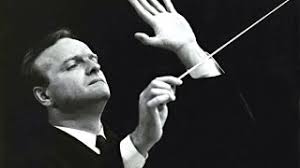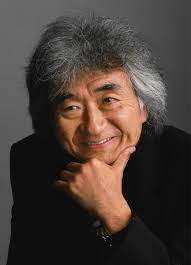The Matthew Passion’s then and now
Since Mendelssohn’s re-staging of Bach’s Matthew Passion, there have been numerous masterful performances of the work. The recordings we are able to listen to today are numerous, ranging from Willem Mengelberg’s prewar performance to historical performances on ancient instruments, in a variety of interpretations and performance styles. Among them, this time I would like to highlight three of the pieces which have been uploaded on YouTube with video clips and discuss their performance aspects.
Come, you daughters, help me to lament,
see whom?-the bridegroom,
see him-how?-as a lamb!
Behold,-what?-behold patience,
look-where?-at our guilt;
The lengthy opening double chorus begins with a five-bar triplet orgelpunkt that hints at the story of Jesus’ Passion that is about to unfold. The basso continuo, which represents the steps of the “bridegroom” bearing the heavy cross, is gloomy and tragic. The scene is described in the form of questions and answers by the crowd. The chorale “O lamm Gottes unschuldig” is sung by the boys’ chorus. This shows that the “bridegroom” is Jesus Christ. With this first chorus, Bach draws the listener into the story at once. From the 18th movement, the scene of the conversation between Jesus and His disciples in Gethsemane, to the 19th movement, where the chorale is interrupted between the tenor recitative, the scene is dramatic. Bach’s direction pulls the listener along. This is as calculated as a Kurosawa movie. The climax of the first half is from the capture of Jesus to the chorus of the 27th movement. The first half ends with the chorale “O Mensch, bewein dein Sünde groß,” . The chorale melody is sung by a soprano and a lipieno soprano.
The first one is the 1971 performance by Karl Richter. For listeners accustomed to modern Bach performances, the tempo is undeniably slow. Orchestral vibrato was also commonplace in this period. Following the chorus at the beginning of the performance, we finally enter the story of the 26th chapter of the Gospel, and the soloist’s bel canto singing in the aria and the shifting tempo in the recitative are all in the tradition of the 19th century. For example, the recitative of Jesus is sung very slowly and with great emphasis, and it is clear that various dramatic effects are aimed at. Such “overproduction” is rarely seen in modern Bach performances. The Munich Bach Choir is well trained and easy to listen to. And, above all, evangelist Peter Schreier is my favorite. However, the position of the chords in the right hand of the harpsichord is rather high, and the way the harpsichord is played as if it were slamming down is not good enough. But maybe this was just the way things were back then. As a side note, I really liked Schreier’s “Die schöne Müllerin” and I had two different recordings of this song. one with Steven Zehr’s hammer flugel and one with Konrad Ragossnig’s guitar accompaniment. That’s why the best thing in Karl Richter’s Matthew may be the evangelist.
And the second one, Christian Fliegner, from a new era of performance. This is a video by the conductor who led the Tölzer Knabenchor, of which he himself sang as a boy soprano. The performance of the old instruments by Hofkapelle München is also nothing short of wonderful. The most distinctive feature of this recording is the use of a boy soprano and a boy alto. The use of a boy alto in particular is groundbreaking, as it reproduces the original sound that Bach wanted at the time. How pure the aria “Erbarme dich, mein Gott,” in the 39th movement is! The boy soloists change the singers according to the piece, and this was probably the way they performed in Bach’s time. Furthermore, Peter, Judas, and Pilate are sung by the choir’s bass. The tempo of the chorus at the beginning is naturally much faster than in Richter’s performance. As a portrayal of Jesus walking with the cross on his back, Richter’s tempo seems more realistic (perhaps that is why Gustav Leonhardt’s recording is relatively slower). This is probably a matter of taste for different listeners. The recitative of the evangelist and Jesus also flows much more smoothly than Richter’s. Overall, the performance is less extravagant, which is a common characteristic of authentic performance.
As a third example, I was going to introduce a performance by Seiji Ozawa, but when I searched for it on YouTube this time, I found that it had been removed. In short, this performance is right in the middle of Richter’s and Fliegner’s performances. It uses modern instruments (some of the violinists use baroque bows), a female soprano and alto, but the interpretation is as close as possible to Fliegner’s performance. The tempos are also set in a modern sense, and there is absolutely no discrepancy there. I uploaded the file here so you can see it.




